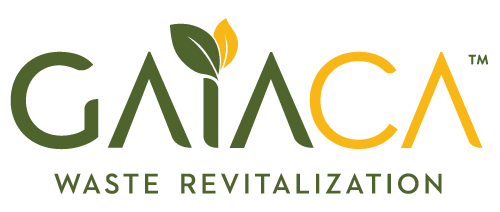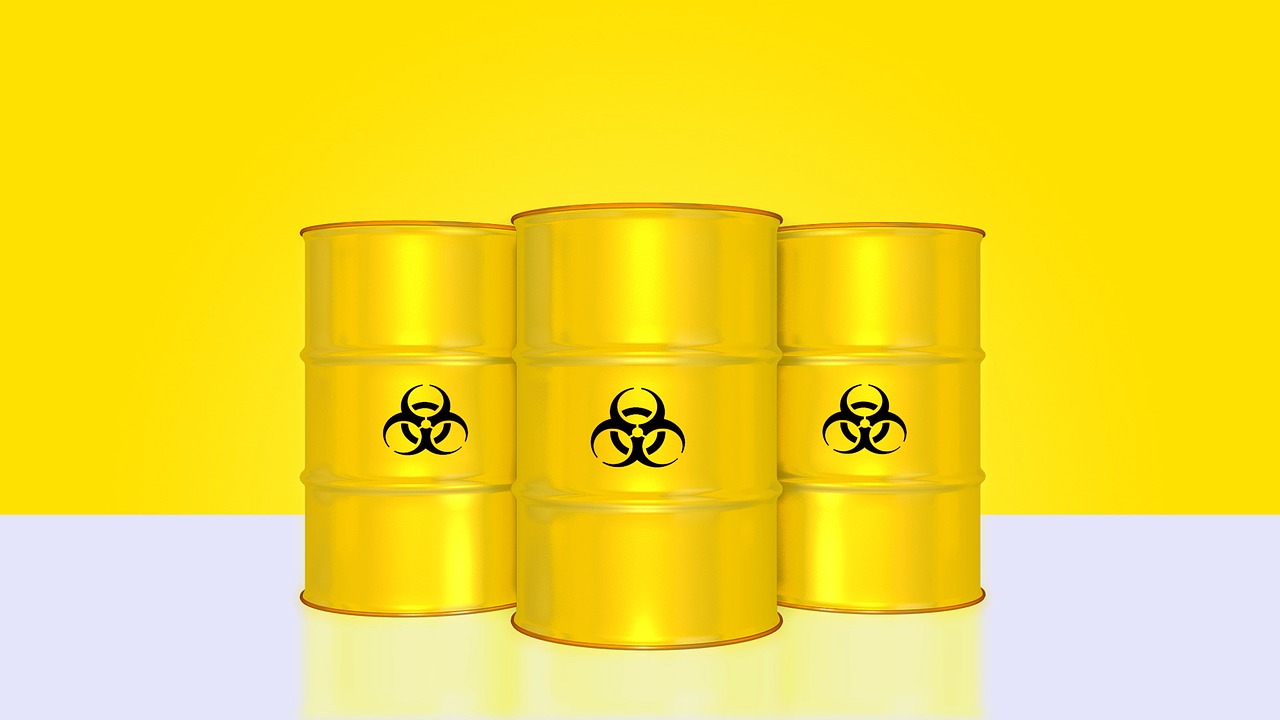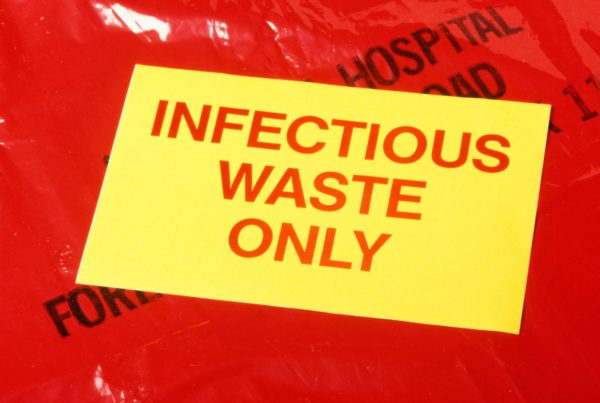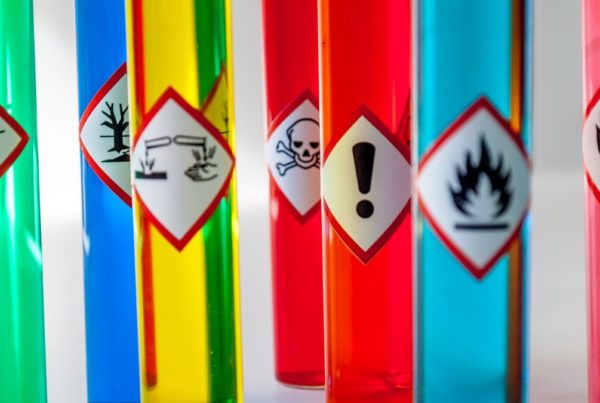If your California business generates enough hazardous waste to necessitate an EPA ID number, you may be required to establish a Hazardous Materials Business Plan (HMBP). The HMBP program was established in California in 1986 in order to mitigate the potential risks associated with handling hazardous substances.
The HMBP outlines information about your hazardous material protocols, including the types of materials, the volume of material, where the materials are stored, and information about the health risks associated with the materials.
The purpose of the HMBP is twofold:
- To notify emergency responders of potential threats to public health and the environment.
- To satisfy state and federal Community Right-to-Know laws, which mandate transparent reporting on industries’ hazardous material storage and use.
cDetermine if You’re Required to Submit a Hazardous Materials Business Plan
Before you create your HMBP, the first step is to research the laws in the area where you conduct business. Every state has its own rules, and some individual jurisdictions may impose more stringent requirements.
In California, a facility must establish an HMBP if it generates or stores the following reportable quantities of hazardous waste in a given year:
- 55 gallons for liquids
- 500 pounds for solids
- 200 cubic feet of compressed gas
In addition, an HMBP is required for any business that uses materials classified as “extremely hazardous substances” under Section 355.61 Title 40 of the Code of Federal Regulations. These include ammonia, arsenic pentoxide, benzyl chloride, formaldehyde, and nitric oxide. Refer to this complete list of extremely hazardous substances.
If you handle any amount of hazardous materials in California, you will also be required to create an emergency contingency plan. This is separate from the HMBP, and it outlines the specific actions that must be taken in order to minimize the adverse effects resulting from explosions, fires, or the unplanned release of hazardous materials.
Create Your Hazardous Materials Business Plan
An HMBP must contain the following four elements:
- Business Activities and Owner Identification
- Hazardous Material Inventory
- Site Map
- Emergency Response Plan and Employee Training
Business Activities and Owner Identification
This is the easiest part of the HMBP to complete. You can find the necessary form in the information section of the California Environmental Reporting System. You must include basic information about the business owner as well as a detailed description of activities conducted at the facility.
For this section, it’s very important to complete all fields with accurate, up-to-date information. Any incomplete information may result in a “Not Accepted” designation by the regulator reviewing the document.
For the “Business Activities” section, you’ll generally be required to review a list of hazardous waste activities and select all that apply to your business. The list items include options like Hazardous Waste Generator, Remote Waste Consolidation, and Underground Storage Tanks.
You’ll be required to submit additional documentation for certain list items as noted in the form. For example, if your business handles hazardous waste closure and removal, you will be required to submit a recent closure certificate.
Hazardous Material Inventory
In this section of the HMBP, you’re required to list the specific hazardous materials that are generated or processed at your facility. The list must include all applicable materials generated on site and stored in underground tanks.
Every product containing hazardous substances should come with a Safety Data Sheet (SDS) from the manufacturer. Make sure to keep all of these sheets on hand, as they contain important information that you’ll need for your Hazardous Material Inventory, including:
- The chemical composition of the substance
- The reactive qualities of the substance
- The fire and explosive potential
- A list of potential health hazards
- A list of emergency procedures and general precautions
Note that certain hazardous waste materials may be exempted from HMBP requirements. For example, you’re not required to identify oxygen, nitrogen, or nitrous oxide if you’re a physician, dentist, podiatrist, veterinarian, or pharmacist storing less than 1,000 cubic feet of each material at your primary place of business.
Site Map
The purpose of the site map is to allow first responders and other emergency response personnel to easily locate hazardous materials. The map must identify the locations of such items as:
- Access and exit points
- Loading areas
- Hazardous substance storage areas
- Evacuation staging locations
- Emergency shut-offs
- Fire hydrants
- Fire extinguishers, spill kits, and other emergency response equipment
You may also be required to provide specific details about where and how each hazardous substance is stored. Substances of the same class can usually be stored together, but different waste profiles must be stored in different containers in order to avoid potential hazards.
Strong acids are incompatible with strong alkali, and certain waste materials—like unstable explosives, radioactive materials, and infectious substances—are incompatible with all other hazardous waste profiles. This is why safe storage protocols must be clearly defined.
Emergency Response Plan and Employee Training
This section of the HMBP must identify the facility’s emergency training protocols and outline the specific steps to be taken in the event of an emergency.
This is especially important because, when an emergency strikes, the right response can mean the difference between a messy clean-up and an unmitigated disaster. As a company that provides hazardous cannabis waste management services, we’ve seen clients avoid millions of dollars in fines simply by responding quickly and effectively to hazardous waste spills.
Employees should receive disaster preparedness training upon being hired and should also undergo refresher courses each year. The goal of the emergency response protocol is to protect employees, the public, and the environment.
A general training protocol should ensure that employees are:
- Familiar with the company’s emergency plan.
- Equipped to act in the event of a hazardous substance release or impending release.
- Equipped to minimize any harm to human beings and the environment in the event of a hazardous substance release.
- Aware of the notification and reporting procedures following a hazardous material release.
In addition to being submitted as part of the HMBP, the emergency response procedures should be publicly accessible to employees at all times and preferably posted in common areas of the facility.
How to Submit Your Hazardous Materials Business Plan
Applicants may submit through the California Environmental Reporting System or through the appropriate county HAZMAT division. Each of the four HMBP elements is submitted as its own form.
Before submitting your forms, make sure to review the information completely and ensure that all requirements are met and that all fields are completed. Even a small oversight may result in a rejection of your HMBP, which means you’ll have to complete the submission and review process all over again.
Update Your Hazardous Materials Business Plan as Needed
Your Hazardous Materials Inventory must be updated every year before March 1st. In addition, you’ll need to revise your HMBP if:
- You significantly increase the quantity of hazardous materials generated or processed by your business
- Your start generating or processing a previously undisclosed hazardous material
- Your business changes its name, ownership, address, or other important information
- Your business adjusts its operations in a manner that necessitates significant changes to your HMBP
If any of these changes apply to your business, you’ll usually need to update your plan within 30 days. Any updated plans are subject to acceptance or rejection by regulators.
A Hazardous Materials Business Plan is Essential — But It’s Only the Beginning
If your business requires an HMBP, it should be a top priority. Mismanagement of hazardous waste can carry a fine of $70,000 per day, per violation. Having an official plan on record—and remaining in accordance with that plan—is a major part of remaining in compliance.
But the HMBP is just one aspect of managing hazardous substances in accordance with the law. Hazardous substance handlers and waste generators must also follow all applicable laws, such as:
- Storing each type of hazardous material in the appropriate drums
- Ensuring that all hazardous waste drums are properly labeled and sealed
- Ensuring that all temperature-sensitive hazardous materials are stored at the appropriate standard temperature
- Ensuring that all hazardous waste is discarded at an authorized hazardous waste disposal facility
Managing hazardous materials is a big responsibility, but having a comprehensive management plan is the first step to ensuring the safety of your team, the public, and the environment. If you need assistance, GAIACA’s Health & Safety Department specializes in hazardous materials compliance, and we can develop a complete HMBP on your behalf. Contact us if you’d like to learn more.






